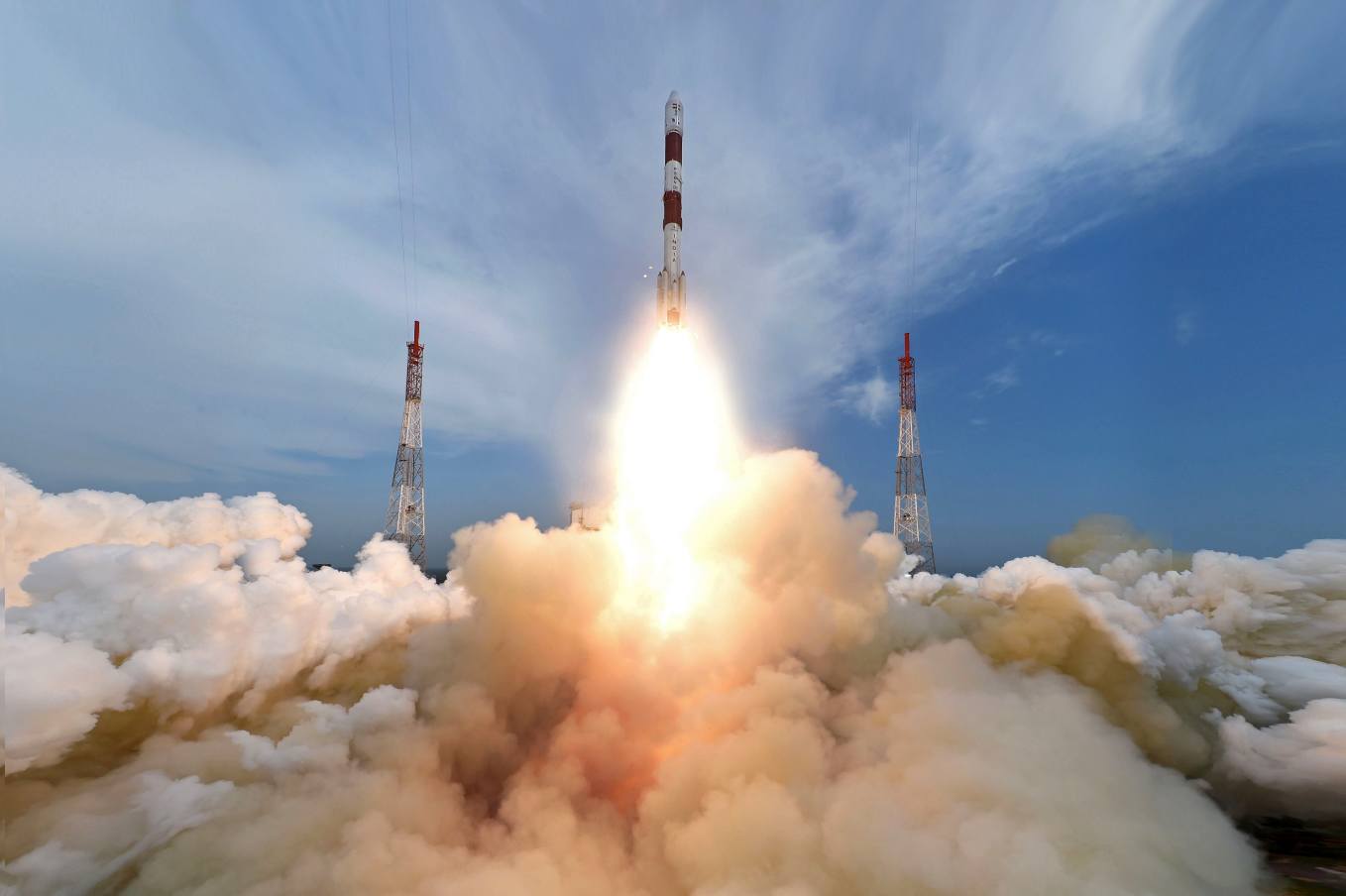India’s Polar Satellite Launch Vehicle (PSLV) successfully launched the ScatSat-1 meteorological satellite along with seven co-passenger payloads on 26th September from Satish Dhawan Space Centre, Sriharikota.
It was the fifth mission of the year for the workhorse Indian launch vehicle and marked the 36th consecutive success for the PSLV. PSLV-C35 is the first PSLV mission to launch satellites into two different orbits, following two restarts of the fourth stage. The mission — the longest PSLV missions to date — was completed in 2 hours 15 minutes and 33 seconds after lift-off.
The Ku-band scatterometer payload carried by ScatSat-1 has enhanced features compared to the predecessor Oscat payload carried by Oceansat-2 in 2009. Data will help provide weather forecasting services to user communities through the generation of wind vector products as well as cyclone detection and tracking.
Of the seven co-passenger satellites carried by PSLV-C35, two – Pratham (10kg) and Pisat (5.25kg) – are University/Academic institute satellites and were built with the involvement of students from IIT-Bombay and PES University, Bangalore and its consortium, respectively.
The remaining five co-passenger satellites were international customer satellites from Algeria (AlSat-1B, AlSat -2B and AlSat -1N), Canada (NLS-19) and the United States (Pathfinder-1). The total weight of all the eight satellites carried on-board PSLV-C35 was 675kg.

